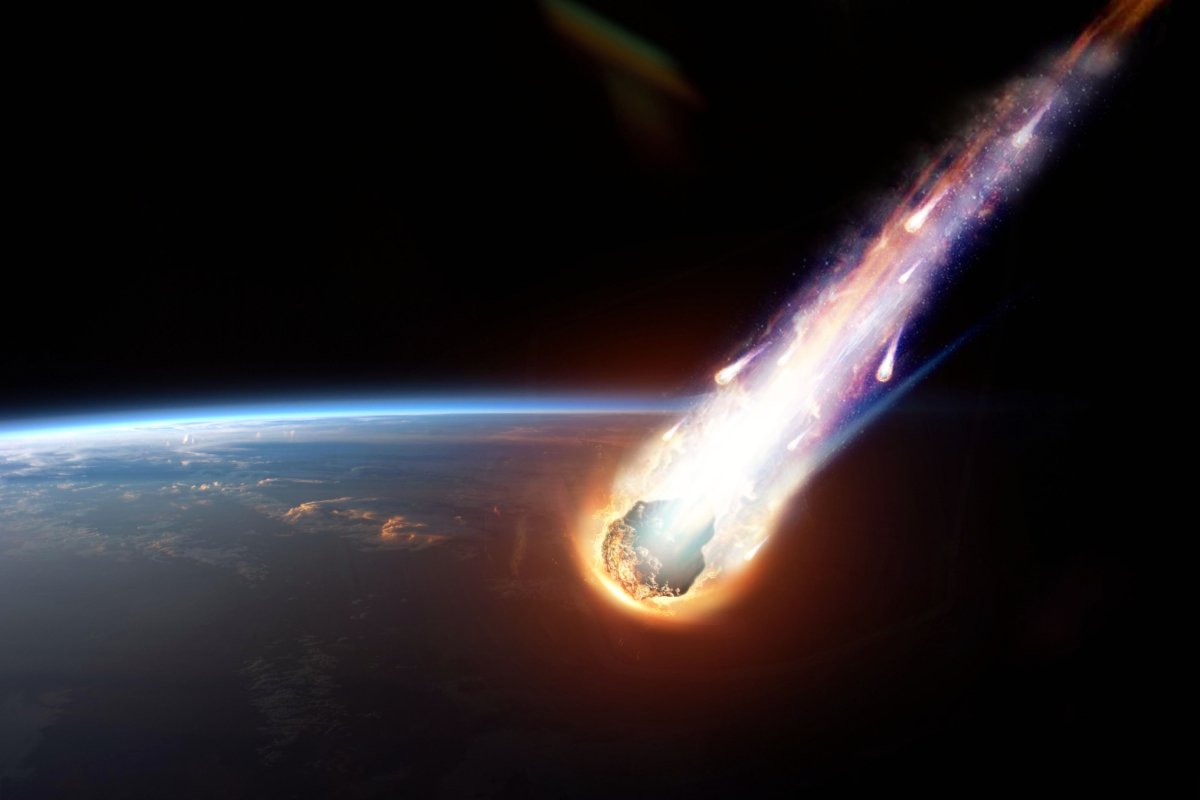An asteroid the size of a house is due to soar past Earth today, coming twice as close to our planet as the moon's orbit.
This asteroid, named 2023 RR5, is estimated to be around 20 feet in diameter, about the height of a two-story house, or a giraffe.
The asteroid will zip past Earth at its closest point at around 1 p.m. UTC, or 9 a.m. EST, according to NASA's Center for Near-Earth Object Studies (CNEOS), passing at a distance of around 0.00139 astronomical units, or roughly 130,000 miles. For comparison, the moon is about 240,000 miles from Earth, while the sun is 93.539 million miles away.
2023 RR5 is one of the roughly 1 million asteroids discovered by NASA so far.

"Asteroids are 'bits of a planet that didn't happen' that orbit the sun between Mars and Jupiter in the Main Asteroid Belt," Jay Tate, director of the Spaceguard Center observatory in the United Kingdom, previously told Newsweek. "However, as they are relatively small, asteroids can be disturbed quite easily, so they can develop orbits that cross those of planets."
At only 20 feet across, 2023 RR5 is fairly small. Asteroids can reach much greater sizes, including Ceres and Vesta in the asteroid belt, which measure around 600 miles and 330 miles across, respectively.
Asteroids are occasionally flung out of the asteroid belt due to interactions with Jupiter's gargantuan gravitational field, sending them careening close to the Earth.
"We believe they formed in the asteroid belt and got ejected by impact, or their orbits were destabilized due to the presence of Jupiter resonances in the belt," Franck Marchis, a senior planetary astronomer at the SETI Institute, told Newsweek last year.

2023 RR5 is forecast to zoom past Earth at 13.79 kilometers per second, or around 31,000 miles per hour, which is about 12 times faster than a rifle bullet. Due to its proximity to the Earth, it is classified by NASA as a "near-Earth object" or NEO, which are asteroids closer to the Earth than 30 million miles away.
There are around 31,000 asteroids in this category, as this is quite an expansive radius. Our closest planetary neighbor, Venus, is just outside at its closest point to us, at 38 million miles.
Some NEO asteroids are also classed as "potentially hazardous objects" or "potentially hazardous asteroids," due to being closer than 4.6 million miles away from Earth, and also being larger than 460 feet across.
"The potentially hazardous designation simply means over many centuries and millennia the asteroid's orbit may evolve into one that has a chance of impacting Earth. We do not assess these long-term, many-century possibilities of impact," Paul Chodas, manager of NASA's Center for Near-Earth Object Studies, previously told Newsweek.

Due to its smaller size, 2023 RR5 does not make the cut to be a potentially hazardous asteroid. However, if a larger asteroid classified as potentially hazardous did hit the Earth, the results would be catastrophic.
"An asteroid 100-200 meters [330-650 feet] in diameter would cause a regional disaster, taking out a small country, but with the resulting global consequences in terms of the global economy and 'globalization,'" Tate told Newsweek in August 2022.
This is incredibly unlikely to happen any time soon, according to NASA's Planetary Defense Coordination Office.
Do you have a tip on a science story that Newsweek should be covering? Do you have a question about asteroids? Let us know via science@newsweek.com.
Uncommon Knowledge
Newsweek is committed to challenging conventional wisdom and finding connections in the search for common ground.
Newsweek is committed to challenging conventional wisdom and finding connections in the search for common ground.
About the writer
Jess Thomson is a Newsweek Science Reporter based in London UK. Her focus is reporting on science, technology and healthcare. ... Read more
To read how Newsweek uses AI as a newsroom tool, Click here.





